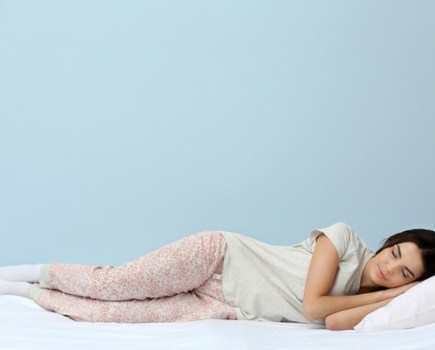Feel happy all season with our expert tips
At this time of year it’s common to get a touch of the blues, however, around 10 per cent of people experience more serious symptoms of winter depression, also known as seasonal affective disorder (SAD)
‘It’s twice as likely to happen to women, and people often find out whether they’re susceptible by their twenties,’ says psychiatrist Anne Farmer. Because it’s all due to your body’s reaction to daylight, it’s more common the further north you live, if your workplace is quite dark, or if you do shift work that means you’re often asleep during the day.
‘As well as a low mood, people might experience lower self-esteem and confidence, or feeling generally lethargic or unmotivated,’ says Anne. There’s also a chance you could get physical aches and pains. But, thankfully, as it’s an environmental condition, there are lots of natural ways you can help alleviate the symptoms and shake off the blues.
Take a break
Sunlight provides your body with vitamin D, which in turn helps you synthesise the happy hormone, serotonin – something that’s shown to be low in people with SAD. So, it’s a brilliant reason to book a winter sun holiday! ‘Anywhere at a latitude lower than the UK is good, with areas around North Africa or the Canary Islands being particularly effective,’ says Anne.
Let there be light
A handy light box, such as Lumie’s Vitamin L (£75, lumie.com) could be just the trick for improving symptoms. ‘Around 85 per cent of people with SAD benefit from light therapy,’ says Anne. This is because it helps to regulate melatonin – another mood hormone, and one that’s also needed to regulate sleep. The best time to use the light box is for around 30 minutes in the morning so that it doesn’t upset your sleep rhythm in the evening. You should use it before the onset of symptoms, every day until March.
Keep on moving
Even if the weather outside doesn’t seem too appealing, it’s important for melatonin regulation to get as much natural daylight as possible. Midday is ideal, as that’s when the sun is at its strongest, so make a habit of stepping out at lunch, and try to squeeze in a workout in the evening as well. Two daily, 25-minute sessions of aerobic exercise can be as effective at improving mood as light therapy, according to a study published in the journal Psychiatry.
Talk it out
Socialising with friends and family will help to keep your mood up, and there are also lots of support groups for SAD – see sada.org.uk. Lastly, if you feel like your symptoms are getting unmanageable, it’s important to talk to your GP, as they can refer to you for cognitive behavioral therapy to help you view winter in a more positive way. They might also suggest a course of antidepressants, or you could try melatonin or serotonin-boosting 5htp supplements – but only on their advice.
Top up on protein
Protein, especially chicken, turkey and salmon, help your body make tryptophan, as does protein from pulses and grains such as buckwheat, millet, soybeans and lentils. Filling up on these is preferable to starchy carbs such as potatoes and pasta because these foods can cause a blood sugar crash that exacerbates low mood. Aim to eat a range of proteins and have a total of 1g per lb of your bodyweight each day. As some examples, a salmon fillet is around 22g and a cupped handful of lentils is around 26g.
Embrace good bugs
‘Up to 90 per cent of serotonin is produced in your gut from the amino acid tryptophan,’ says Natalie Lamb from Bio-Kult. Taking a probiotic helps with this. ‘Bio-Kult Multi-strain Probiotics (£9.25, bio-kult.com) help improve mood disorders, and one study showed vitamin D levels in the body increased by more than 25 per cent after daily consumption of a Lactobacillus probiotic supplement for 13 weeks.’









